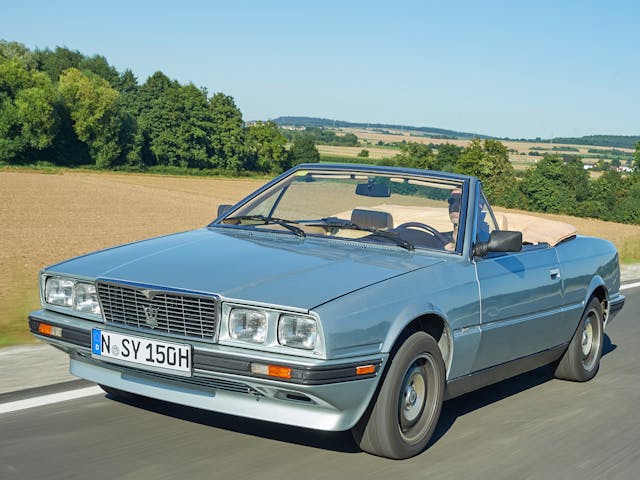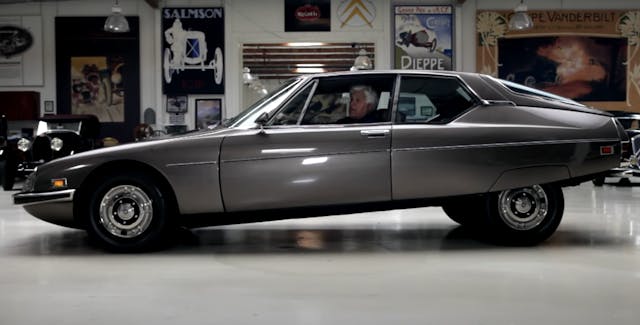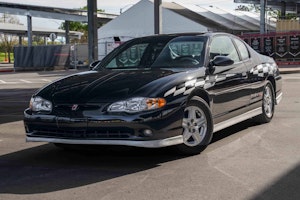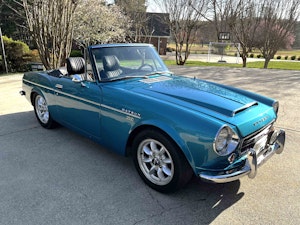Media | Articles
5 Project Cars Reserved for the Brave
Undertaking any project car is not for the faint of heart. Generally speaking, being the sole funding and labor to keeping an aging vehicle in safe operating condition will take everything you are willing to give. However, that doesn’t mean there isn’t a hierarchy of craziness to projects.
Starting an old Ford tractor is one end of the spectrum. Far, far way, on the other end, money disappears quickly, parts often don’t exist, and any task requires a mix of jeweler’s precision and brute force. These are the project cars only undertaken by people who have motivations that might not always make sense to the average person. These are not projects that have high monetary ROI, but in a world where restoring cars is done by people who are not in it for the money anyway, these are the cars that require only the bravest DIYers.
Aston Martin Lagonda

With only 645 built over a span of 14 years, the Lagonda is a rare example of a long-running yet low-production car. The Lagonda is also a notoriously complex machine. All cars are complex at some level, but Aston really outdid itself here. The dashboard on the later production cars switched from LED lighting to cathode ray tubes, which was a sizable step backwards at a time in production when bugs are usually getting worked out of models rather than being added. Complicated beyond words and low volume? DIY only if you dare.
Maserati BiTurbo

Project cars often stem from those looking to take an affordable version of a desirable or interesting car and bring it back to life. Deferred maintenance is very common in this segment. If there was ever a car to highlight what happens when maintenance is ignored, it is the BiTurbo. It was a model made to be the affordable option for the marque and thus many went to buyers unprepared for the complications and needs that come with a twin-turbocharged Italian luxury car. Well maintained, these cars thrived, but those that have reached project-car status likely have issues stemming from the empty maintenance log. Catching up on multiple line items at once adds up quickly any way you total it.
Citroën SM

It takes a car so intriguing as the SM for anyone to tolerate a suspension that required coining new terms just to produce it. The hydropneumatic suspension that makes the ride quality unlike anything else requires “suspension spheres,” which function similar to an accumulator and a spring combined. It’s luxury, it’s French, it’s complicated. It’s a perfect storm, and some people just love to chase tornados. Kudos if you are one of them.
Marketplace
Buy and sell classics with confidence
Audi Allroad

Before the Safari movement, there was the Audi Allroad; an all-wheel-drive wagon with adjustable air suspension to maximize ground clearance, along with a wider track for good measure. It’s not a true off-roader, but it sure was a lot more than anyone needed just for the street. From its 1999 introduction, the Allroad gained a cult following that continues today. The presence of such loyalty stems from an enthusiastic community of people willing to sort out what seems like near-constant issues in even well-maintained examples. All that work done in the confines of an engineer’s dream—and a mechanic’s nightmare.
Fisker Karma

It’s late-model, it’s a complicated hybrid, and the company has gone bankrupt twice in less than two decades. A Karma might just be the most difficult car to work on—that I’m aware of anyhow. One was once donated to a museum and put on display for six months, only for the battery to die, leaving the car stranded exactly where it was, as there was was no way to disengage the electric parking brake. The museum staff consulted the owners manual but all that amounted to was being told “consult a dealer,” which at the time hadn’t been around for years. The last effort was to try to locate and contact a technician who worked at the dealership before it closed. There is hard-to-find information, and then there is becoming a private investigator just to be able to do even the bare minimum of work on your car.
If you notice a theme on these, it’s that the cars themselves aren’t what makes them bad projects, but rather the other factors that are common to the cars we love but are lacking here: support and knowledge, and parts and their availability. That’s why it takes someone ready for a challenge to take these on. Those who are willing just get to experience more and greater lows, but also the accompanying highs. Kudos to them.

















My father had a penchant for purchasing the newest, least-proven Euro imports showing up on American shores during the ’70s. There followed a series of disasterous purchasing decisions, the best and worst of which was a pumpkin orange 1972 Fiat 128 with a black vinyl interior that could reach surface-of-the-Sun temperatures in the summer. That part was OK, at least for him. He also to this day says it was the best-handling car he’s ever owned, though that as well escaped the attention of his hot, deeply uncomfortable children imprisoned in the back seat. What he didn’t love were the constant electrical problems that began within days of taking delivery and never, ever, stopped re-occuring. In short order the car was beyond its warranty, leaving my Dad with the bill for “Fix-It-Again-Tony” moments made by earnest technicians who clearly wanted to fix the car but had no idea how to do it. Ultimately, my dad learned to leave the interior light on overnight so that the car would start in the morning–something having to do with maintaining a small current of electricity so the system doesn’t kill itself. He spent $2500 (roughly the same as its purchase price) repairing that car in 2 and a half years before he traded it in on a Toyota Corolla, his first Japanese purchase. Needless to say he never looked back.
The Rolls-Royce Silver Shadow series with its RR-built hydraulics licensed from Citroën and requiring special RR363 fluid can be an expensive nightmare to bring back from years of disuse. A well-sorted Shadow is a joy that will get lots of respect everywhere it goes, but if you take one on as a project car, you may discover that there’s nothing as expensive as a cheap Shadow.
I agree with your choices, but I’ve been working on Ramblers and AMCs for quite some time, and nearly all fall into this category! Many just “fix them up” rather than restore. They become more of a custom or resto-mod simply because parts to do a 100% resto are either expensive or unobtainable. You very quickly have $40K in a $20K car if you want to do it 100% correct. We have a lot of “period correct” restos that aren’t exactly 100% due to this. Things like custom upholstery using currently available fabrics is common since the original is hard to find or not available. Simple things like heater control valves are often retrofitted. Just recently we’ve had a discussion about brake components for a 71-74 Javelin. AMC used Kelsey-Hayes brakes from 71-75. The calipers used a regular brake hose and AMC calipers are almost impossible to find now. Luckily Mopar used K-H brakes and those calipers fit — you just need to use the matching Mopar brake hose as it attaches to the caliper with a banjo hose and the connection is at a different angle than the straight in hose AMC used. So it’s not 100% correct, but is still the same type caliper. Rotors were AMC exclusive since they are rotor/hub and not hat type. They are hard to find and a bit pricey when found. Many convert daily driver cars to the 79-83 calipers and rotors (Bendix calipers 79-80, Delco 81-83 — both use the same rotor though). Those are still around at a reasonable price (under $50-80 each), but are getting harder to find. Some chain stores no longer have a source for them. Special trim items are NOS or used only, and some things just can’t be found, like vent window seals for all but a couple models. There just isn’t enough demand for anyone to make a profit on reproductions, so we have “made do” with modifying or swapping parts for years now.
With the Biturbo deferred maintenance was not the issue. I had a friend that had a new one and it broke two timing belts during his first year of ownership. There was also an issue with the pressurization of the carburetor if I recall. A beautiful little car, but a horror to own…
Did anyone else notice that the driver’s door of Jay Leno’s SM has been repainted and seems a lot shinier and a bit darker than the rest of the car? I thought that such annoyances affected only us plebeians.
I know, or at least knew where there is a Lagonda sitting out in the open slowly settling into the ground. We saw it in Alexander in Central Otaga , South Island, NZ.
That was 2016, I couldn’t believe it. I lived in the UK until 1975 and never saw one. There were also a few other unusual vehicles on the property. I could get any response from the building after goi g back 3 times.
Oh, I thought you were talking about OLD cars! Of course, late-models are hard to restore! In 1961 or ’62, Motor Trend reviewed a new T-Bird, and referenced the literally miles of wiring aboard speculated that it would be hard to repair, and impossible to restore — for a reasonable person. I’d never take on a car that I can’t realistically expect to repair, even if a resto-mod. Forget it. Besides, I couldn’t afford the tab, as a retired teacher/truck driver/author/fire-fighter/bassist, etc. Now if we were talking ’51 Fords, or ’61 Pontiacs…
This is exactly why I favour the “Roadkill” school of restoration. Find it, make it move under it’s own power, enjoy…
Make it work and enjoy, the heck with worrying about it being stock.
Just about any Jeep qualifies nowadays….
Just
Empty
Every
Pocket
LMAO
People who like Vintage Volkswagens believe that VWs are VWs–mostly the same car. So, thinking to take a sporty turn, they choose a Karmann Ghia as their next restoration project. After all, the engine and chassis and running gear are the same as for the lowly VW Beetle–what could go wrong? Here’s what–not much else of a Karmann Ghia (anything of any note, at least) is anything resembling the Beetle. And, can be quite rare. And, usually a LOT more expensive than the comparable parts for that Beetle. As a result, the cost of the Karmann Ghia restoration can be 4-5 or more times as expensive and time consuming as would be the restoration of the same year of Beetle.
in 1980 when i was 19, i was looking at options for employment as a mechanic. a friend of my sister’s knew a frenchman citroen mechanic in his early 70s looking for an apprentice to teach and take over his business. living in the LA area at the time, i took a trip and met him at his shop in the bay area. he said, if i was there just one day earlier, he would’ve hired me. what a turn that would’ve been in my life!
I cannot imagine a cult for soemthing like the Allroad, but then in The Villages in Florida, there is a Kia Soul Owners Club.
What about the Fisker Ocean?
Burt Reynolda drove a ’74 SM in the opening sequence to “The Longest Yard”. He took it from his girfriend who was one of the women on “The Price is Right” ( cant remember her name ). I was a little kid and the time, but I remember both were equally hot.
At least 2 SMs were used in filming the chase sequence in The Longest Yard as was explained in this article in Citroenvie: https://citroenvie.com/the-longest-yard-sm-outcome/
I have owned and played with many, many cars – sampling most European brands. The Maserati 430 (bi-turbo) was the most disappointing. It looks the part, was fun the drive – but I just could not keep the low mileage example I owned running well enough to be enjoyable. Once teethed, something else would go wrong – over and over. I could not get over the gauge needle indicators that were warped! And new OEM gauges were also warped, right out the box! I gave up, sold it; lost my ass due to my need to recondition and make the car right. The new owner already had one and wanted another… I have lost money on other cars, sometimes you pay to play. But losing money is a lot easier when you actually enjoyed the car.